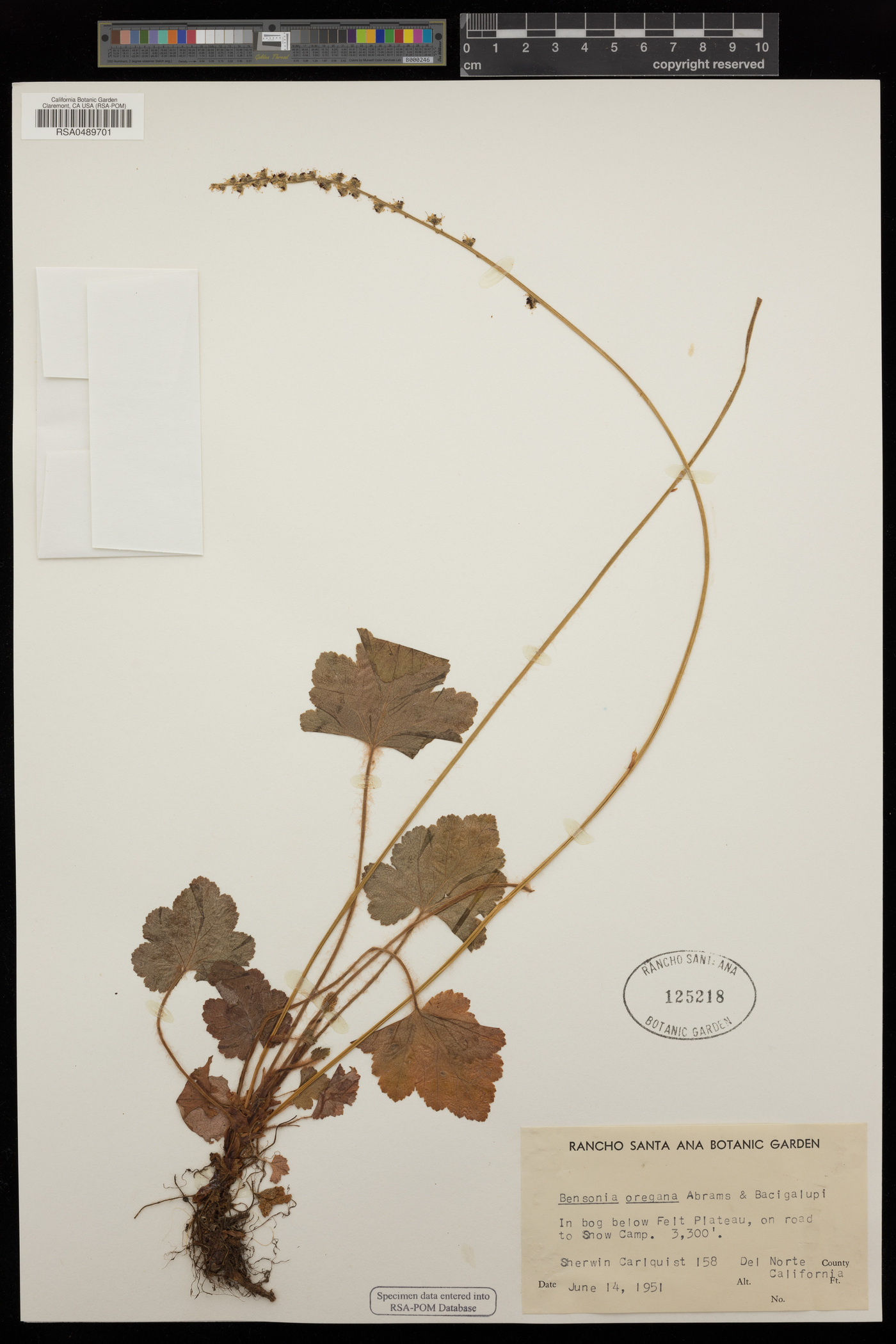
|
Family: Saxifragaceae |
Herbs, not rhizomatous, not stoloniferous; caudex slender, scaly. Flowering stems erect or ascending, leafless, 19-45 cm, stipitate-glandular. Leaves in basal rosette; stipules present; petiole long stipitate-glandular; blade orbiculate to cordate, 5-9-lobed, sinuses relatively shallow, base cordate, ultimate margins unevenly crenate, apex rounded, surfaces long stipitate-glandular along veins abaxially, sparsely long stipitate-glandular adaxially; venation palmate. Inflorescences spikelike racemes, from axillary buds of basal rosette, 15-30-flowered, ebracteate. Flowers slightly bilaterally symmetric, base gibbous on abaxial side; hypanthium 1/3 adnate to ovary proximally, free from ovary 0.5-0.8 mm, yellowish white to green; sepals 5, yellowish white to green; petals absent or 5, purple or pink; nectary tissue not seen or inconspicuous; stamens 5, opposite sepals; filaments filiform; ovary 1/3 inferior, 1-locular; placentation parietal; styles 2; stigmas 2. Capsules 2-beaked. Seeds dark brown, oblong to ellipsoid, smooth. x = 7. Although the floral morphology of Bensoniella is quite distinctive, vegetative similarities suggest a connection with the otherwise equally distinctive genus Mitella. Molecular data (D. E. Soltis et al. 1990), as well as karyotype analysis (Soltis 1988), clearly show a close relationship between the genera.
|
This project was made possible in part by the Institute of Museum and Library Services [MG-70-19-0057-19].
Powered by Symbiota



